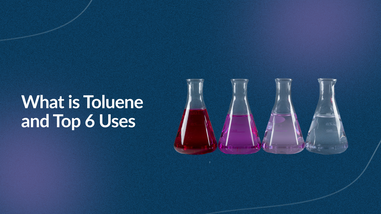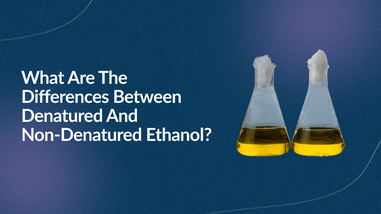- No products in the cart.
Choosing the right cleaning solvents for your medical device lab is one of the most important factors for an effective cleaning process. Knowing how to choose the right cleaning solvents now can save you money, time, and headaches in the future. If your solvents aren’t compatible with the components you’re using them on, it can result in ineffective cleaning or, even worse, degradation and permanent damage to the device.
Evaluating the Best Cleaning Solvent for the Job
Solvents have a low bioburden. Solvents do not contain pyrogens or allow bacteria to grow. This allows you to be confident that your cleaning process is bioburden-free, thereby keeping quality control for good manufacturing practices (GMP) simple. While aqueous-based systems have their benefits as well (particularly environmental), additional care should be taken to reduce residual water-based solution that can serve as a breeding ground for microbes.
Here is a step-by-step way to assess your cleaning process and choose the right solvents for the job.
Understand the needs of your components.
It is important to understand how different component parts have different needs. Care should always be taken to use solvents that won’t degrade the quality of the parts or function of the device. For example, electronic parts should always be cleaned with non-conductive solvents. However, both polar and non-polar solvents can (and often should) be used. The polar solvents can be used to remove polar residues such as salts from your fingers, while non-polar solvents can remove oil and grease.
To dissolve both of these types of residues, you can also use an appropriate blend of polar solvents, such as chlorinated or fluorinated, and non-polar solvents like alcohols, acetone, or water. In fact, according to the FDA, “the more common cleaning solvents used in the manufacture of medical devices are methyl, ethyl and isopropyl alcohol, deionized water and the chlorinated and fluorinated solvents."
.

Choose the right cleaning solvents.
Once you have a firm grasp on your needs, do your research on what kind of solvent will fit your application best. To choose the best solvents for the job, you need to take a few things into consideration.
-
What are the needs of your components (covered in step 1)?
-
What kinds of residues and dirt need to be cleaned off of them?
-
Do you need a polar solvent, but your device could be damaged by fluorinated solvents?
-
Do you need to remove solids, ionic contaminants, or just oil and grease?
-
Will sterile water or another aqueous-based solution work for you? Do you have the facilities/equipment necessary to maintain low bioburden with the use of water?
Different solvents will serve different purposes. You can save on cleaning costs by understanding when certain types of solvents are necessary and when they’re not. Choose solvents based on your needs while minimizing waste and unnecessary steps. The table below summarizes some basic characteristics of common solvents.
Chlorinated solvents are polar solvents. They are more aggressive cleaners than their fluorinated solvent counterparts. Fluorinated solvents have a relatively lower boiling point than chlorinated solvents, and are therefore often used in vapor cleaning systems. Ethyl and methyl alcohol can be used to remove grease and oil, as well as ionic contaminants. Isopropyl alcohol also is used to remove grease and oil. Water can also be used to remove ionic residues, but care should be taken to remove excess water to maintain a low bioburden. However, deionized water and alcohol are often used as a final wash to remove excess chlorinated- or fluorinated solvents.
Balance cost-effectiveness with solvent-effectiveness.
As mentioned before, residual water on surfaces or small crevices can create a place for bacteria to grow when using aqueous cleaning systems. To combat this, the addition of a high-powered drier is often used. However, these post-cleaning additions can create additional costs both in the short term (more equipment required) and in the long term (operating and maintenance costs, quality control checks, etc).
Many labs are turning to solvents or vapor-solvent systems to avoid these troubles. Cleaning solvents evaporate much faster and are pyrogen- and bacteria-free by nature. Application of additional technologies, such as solvent vapor degreasing systems or other machines can add to the efficiency and consistency of the cleaning process in the long-term. However, always researching the best cleaning solvent to remove the types of residues on your devices can save you from pricey investments that may not be necessary for your application.
Calculate the cost per part cleaned and optimize.
Once you’ve chosen your solvents based on your component parts, solvent needs, and cost requirements, it’s good to calculate the cost per part. To do this, take into consideration: solvent costs, operator costs, and equipment costs (this will vary greatly per application). Then, calculate costs per a time suitable with your application (an hour, a day, etc) and divide by the number of parts that are cleaned during that time. Once you have that number and understand the factors that can change it, you have the power to decrease your cleaning costs.
One of the simplest ways to reduce this cost is to choose your solvents wisely (covered to step 2). Analyze your entire cleaning process to identify steps, solvents, or equipment that aren’t necessary and remove them from your process. This will save you time and money in your process. The better you know your needs and your process, the easier it is to choose the right cleaning solvents and keep operating costs down.
__
For over 40 years, Lab Pro has been committed to delivering a complete medical device laboratory solution, offering the highest quality chemicals, reagents, and solvents for our customers worldwide. Come visit the biggest Lab Supply showroom in the Bay Area, or contact us online or at 888-452-2776.












































